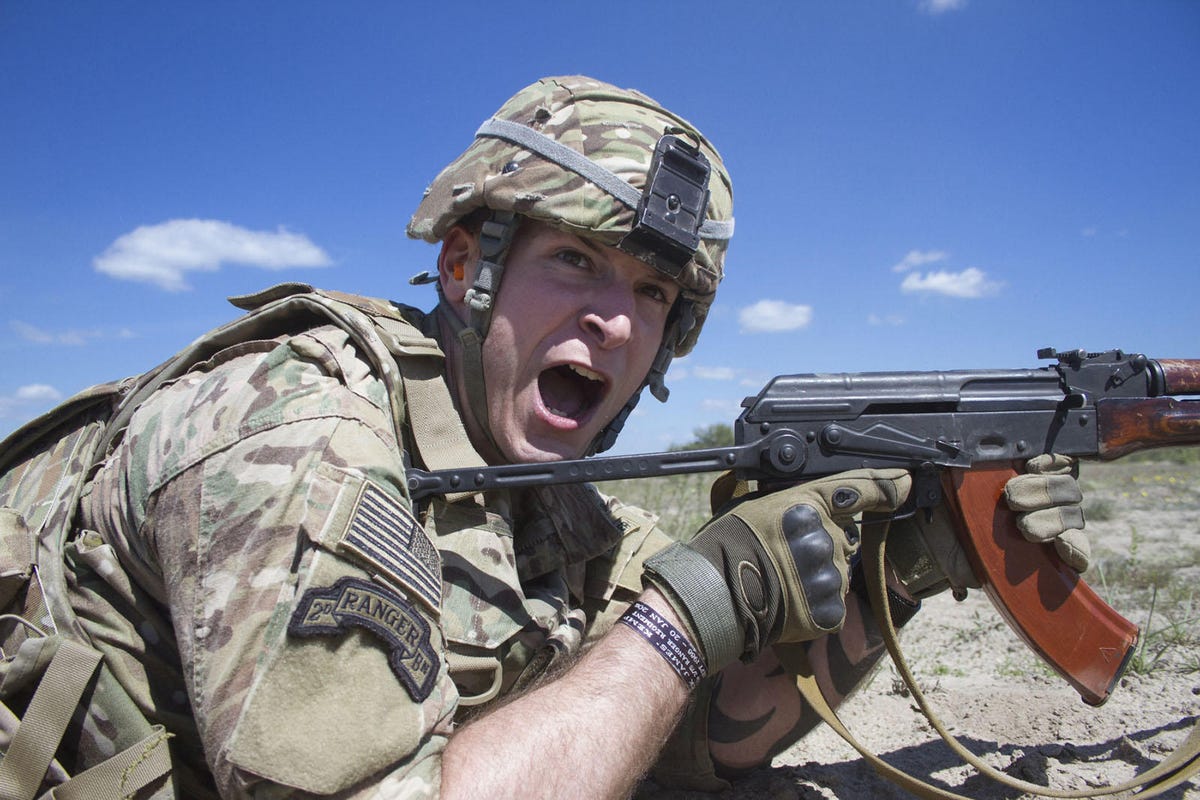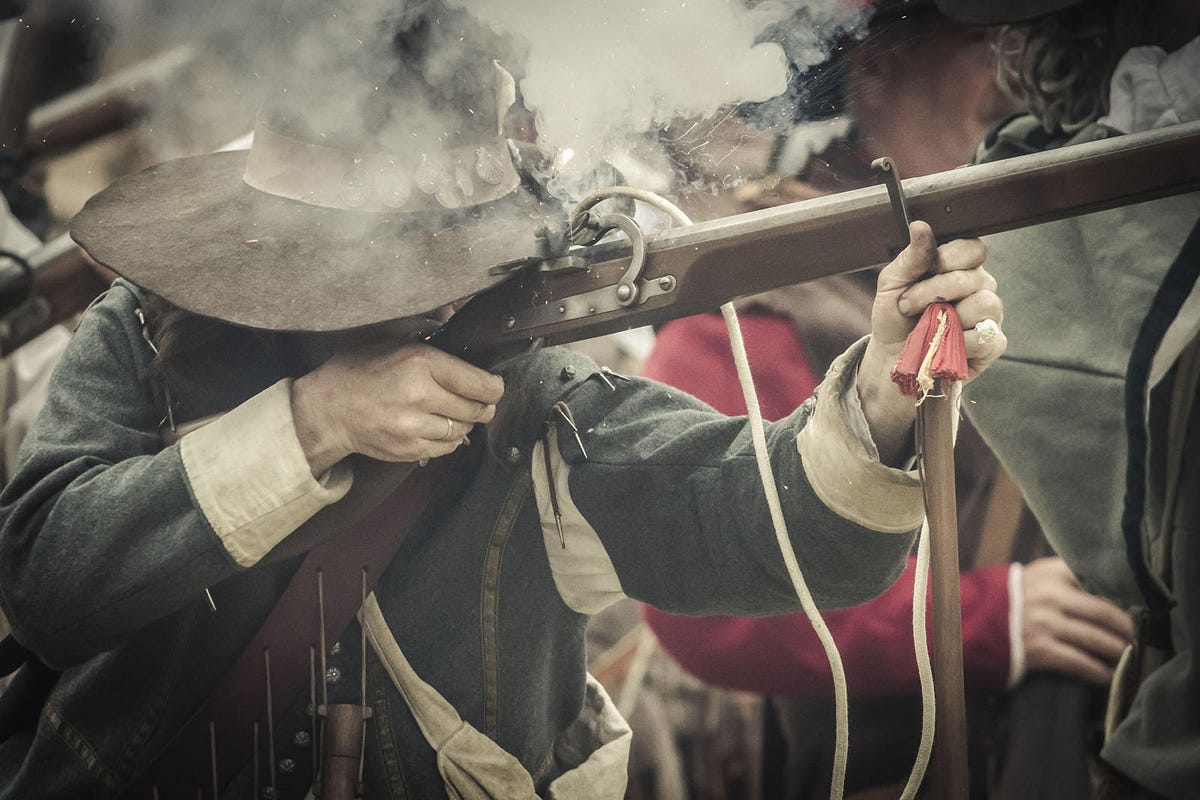The deadliest weapons on Earth, ranked
From swords and javelins to modern day nukes, these are the deadliest weapons humans have ever created

A brief history of weaponry
A common thread through human history is the constant development of deadly new combat technologies. The US Army and Bulletin of the Atomic Scientists have completed research on weapons used throughout history, using real-world data from battles to calculate their "lethality index," a numerical way to show how deadly each weapon can be that accounts for weapon range, rate of fire, accuracy, radius of effect and battlefield mobility.
Here's how the US Army's rankings fell.

Arquebus
Dating back to 15th-century Spain, the arquebus is the earliest shoulder-fired gun used in warfare. It required the use of a fork rest for support.
The relatively inexpensive gun spread quickly across the world, but it was inaccurate at long range, took up to a minute to reload and could cause permanent hearing loss in its users.
Lethality Index: 10
Sword
The earliest known example dates back to the start of the Bronze Age, roughly 3300 BC -- but the sword didn't become widespread until thousands of years later.
Though deadly in the right hands, the sword obviously requires hand-to-hand combat, significantly limiting its lethality.
Lethality Index: 20
Crossbow
First appearing in East Asia around the sixth century BC, the crossbow was a powerful weapon. Compared to a traditional bow, it was much easier to master and required significantly less strength.
Lethality Index: 32
16th-century cannon
Early cannon made excellent siege weapons, allowing armies to pierce castle walls with 12-pound cast-iron projectiles.
Cannons had many drawbacks on the battlefield, though. They were tough to move -- even with horses -- and aiming was mostly guesswork.
Lethality Index: 43
Flintlock musket
The flintlock musket, first appearing in Europe during the early 17th century, was a major upgrade over the arquebus. It was much lighter, eliminating the need for a support.
The muzzle-loaded "Brown Bess" musket, seen here, a favorite of the British army in the 18th century, could fire four rounds a minute. Misfires proved a major problem, though, and it could not be used when wet.
Lethality Index: 47
Breech-loading rifle
Unlike front-loaded muskets, breech-loading rifle rounds are loaded into the rear of a barrel, saving time and increasing safety. Grooves bored into the gun's barrel -- rifling -- stabilized bullets during firing, improving accuracy.
This photo of an African American Buffalo Soldier holding a breech-loading rifle dates to the 1890s, though the weapons were used earlier, in the American Civil War.
Lethality Index: 229
Springfield model 1903 rifle
Popularly used by American troops in World War I, this rifle could be fired semi-automatically, thanks to its use of five-round magazines. It quickly gained a reputation as a reliable, accurate and deadly weapon.
Use of the gun as a sniper rifle continued throughout World War II, though its short range (600 yards) limited its use.
Lethality Index: 778
Assault rifle
Introduced by Germany near the end of World War II, assault rifles put the rapid-fire power of a machine gun -- about 550 rounds per minute -- in an easier-to-carry form.
All assault rifles are capable of selective fire, are reloaded via detachable magazines and have an effective range of at least 330 yards.
Lethality Index: 4,200
World War I machine gun
By the start of World War I, most countries had begun using self-powered machine guns. The most popular design, the Maxim gun (1883), used a water-cooling jacket to reduce overheating.
The gun could fire a blistering 550 rounds per minute, but due to its size and weight, a team of four to six men were required to properly operate it.
Lethality Index: 12,730
World War I tank
Developed by the British, tanks first appeared on the battlefield during World War I's Battle of Flers-Courcelette in September 1916. The heavily armored vehicles were designed to break through stalemates and cross trenches.
Tanks such as the Mark I, seen here, were incredibly slow and subject to frequent breakdowns. The poorly ventilated cockpits, meanwhile, would often fill with toxic gases.
Lethality Index: 68,300
World War I fighter-bomber
World War I was the first major conflict to see planes put on the offensive.
Early bombers lacked proper sights and could only carry small loads of simple explosives. Two-seated fighters would typically have a front-mounted machine gun for offense and a rear-mounted one for defense.
Lethality Index: 229,200
French 75mm gun
Officially adopted by France in 1898, the 75mm field gun was designed to shower enemy forces with explosive shrapnel shells at a rate of 15 rounds per minute.
By 1916, these guns were firing toxic mustard gas and phosgene shells.
Lethality Index: 340,000
V-2 ballistic missile
Created by Germany during World War II as a weapon of revenge, the supersonic V-2 rocket was first used to bomb London in 1944. Over 3,000 V-2s were launched, killing 2,754 people in London alone and destroying enough buildings to cause a housing crisis. Thousands more concentration camp prisoners died in their construction.
Lethality Index: 861,000
Automatic grenade launcher
The MK-19 automatic grenade launcher, seen here, was developed by the US during the Vietnam War. The belt-fed weapon fires 40mm grenades with an effective range of 1,600 yards.
Its grenade blasts likely kill anyone within 16 feet and wound those within 50 feet.
Lethality Index: 1,500,000
World War II Tank (Sherman M4)
By the end of World War II, the US had built more than 40,000 M4 Sherman tanks, for its own use and to lend to Britain, France, Poland, China and Canada.
With a top speed of 30 mph on roads, it was much faster than tanks used in World War I.
Lethality Index: 2,203,000
World War II fighter-bomber
Planes became far more deadly in World War II thanks to all-metal construction, liquid-cooled engines and more powerful armament. They were a key element of Germany's Blitzkrieg strategy.
The plane seen here is a British Hawker Typhoon capable of carrying two 1,000-pound bombs. Later in the war the plane carried rockets as well.
Lethality Index: 3,037,900
20-kiloton nuclear bomb ('Fat Man')
The most powerful nuclear weapon ever used offensively was Fat Man, a roughly 20-kiloton plutonium device detonated over Nagasaki, Japan on August 9, 1945.
The blast, seen here from Koyagi-jima, killed up to 40,000 people immediately, with at least as many more deaths to come from the lingering effects of radiation.
Lethality Index: 48,550,000
25-megaton hydrogen bomb
The B-41 hydrogen bomb, first deployed in September 1960, is the most powerful weapon ever created by the US, with a maximum yield of 25 megatons, or equivalent to 25 million tons of TNT. With a lethality index roughly 4,000 times greater than Fat Man, it's also the most deadly.
Thankfully, the thermonuclear device was retired shortly after its creation. The US' current most powerful weapon is the B83 bomb, with a yield of "just" 1.2 megatons.
Lethality Index: 210,000,000,000

